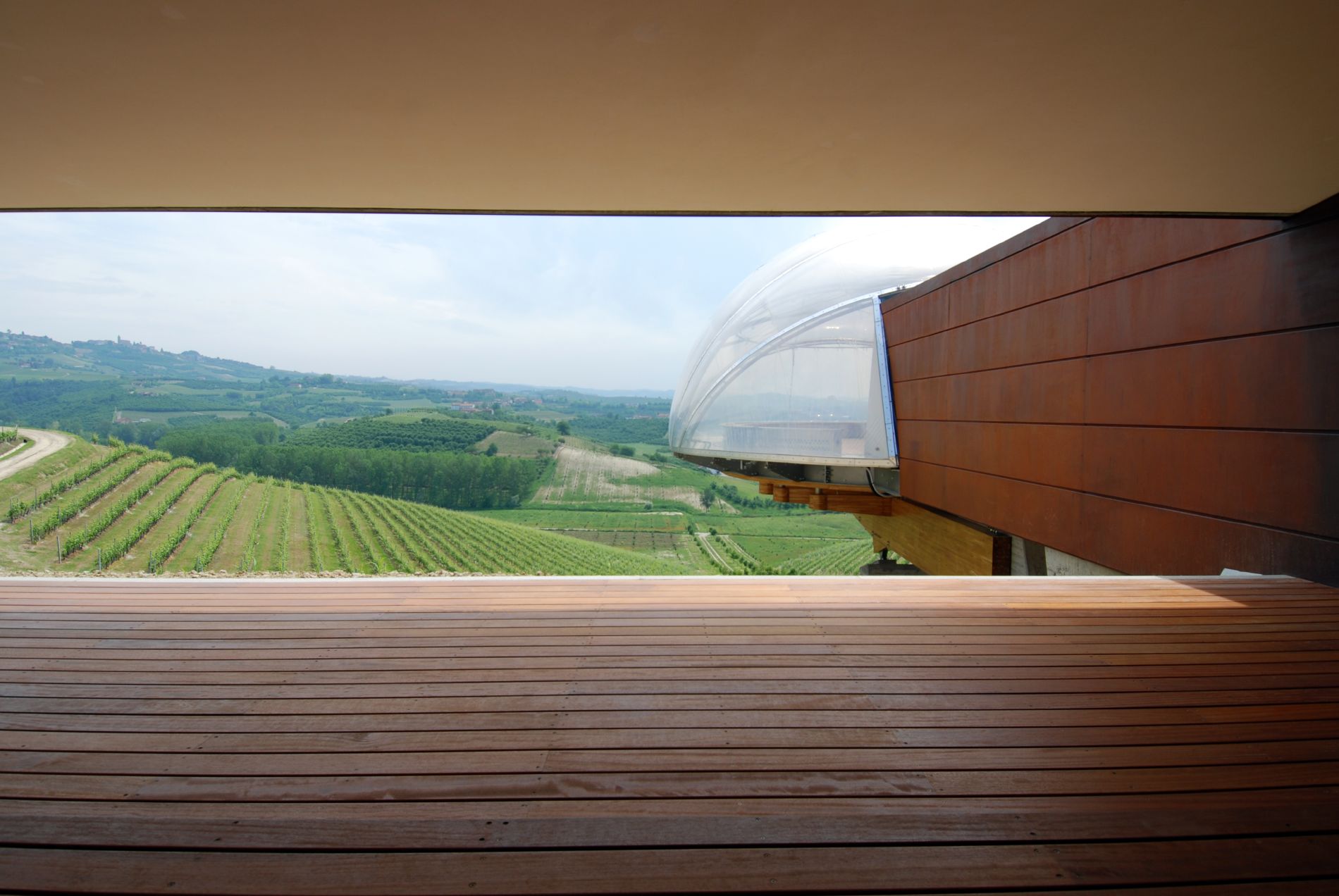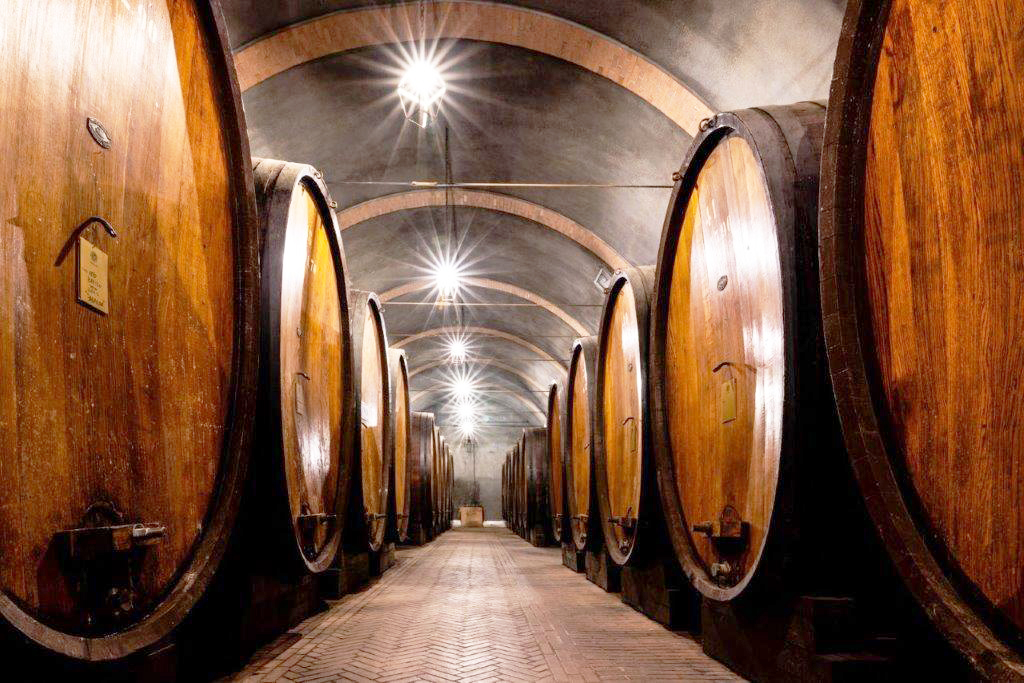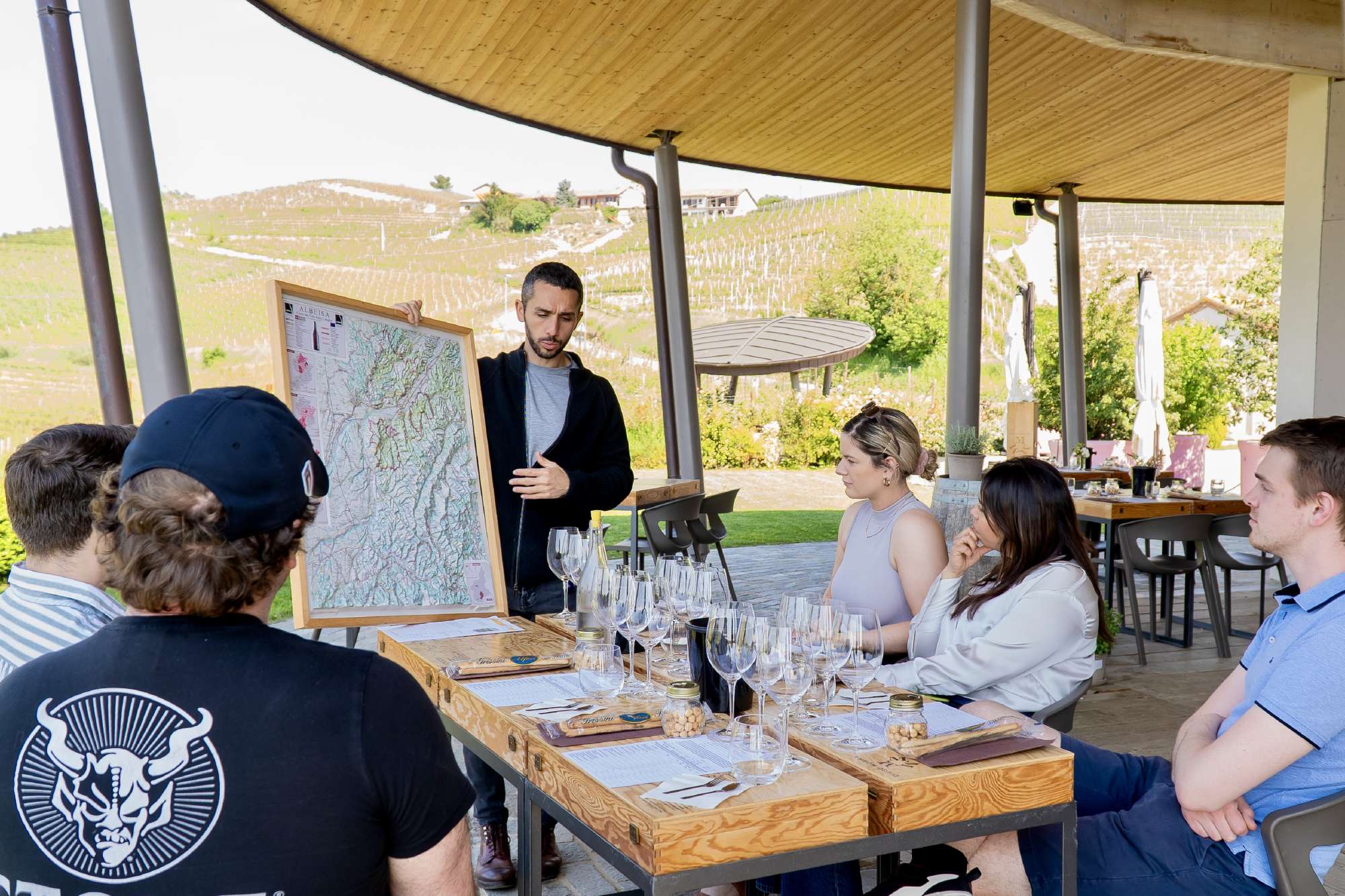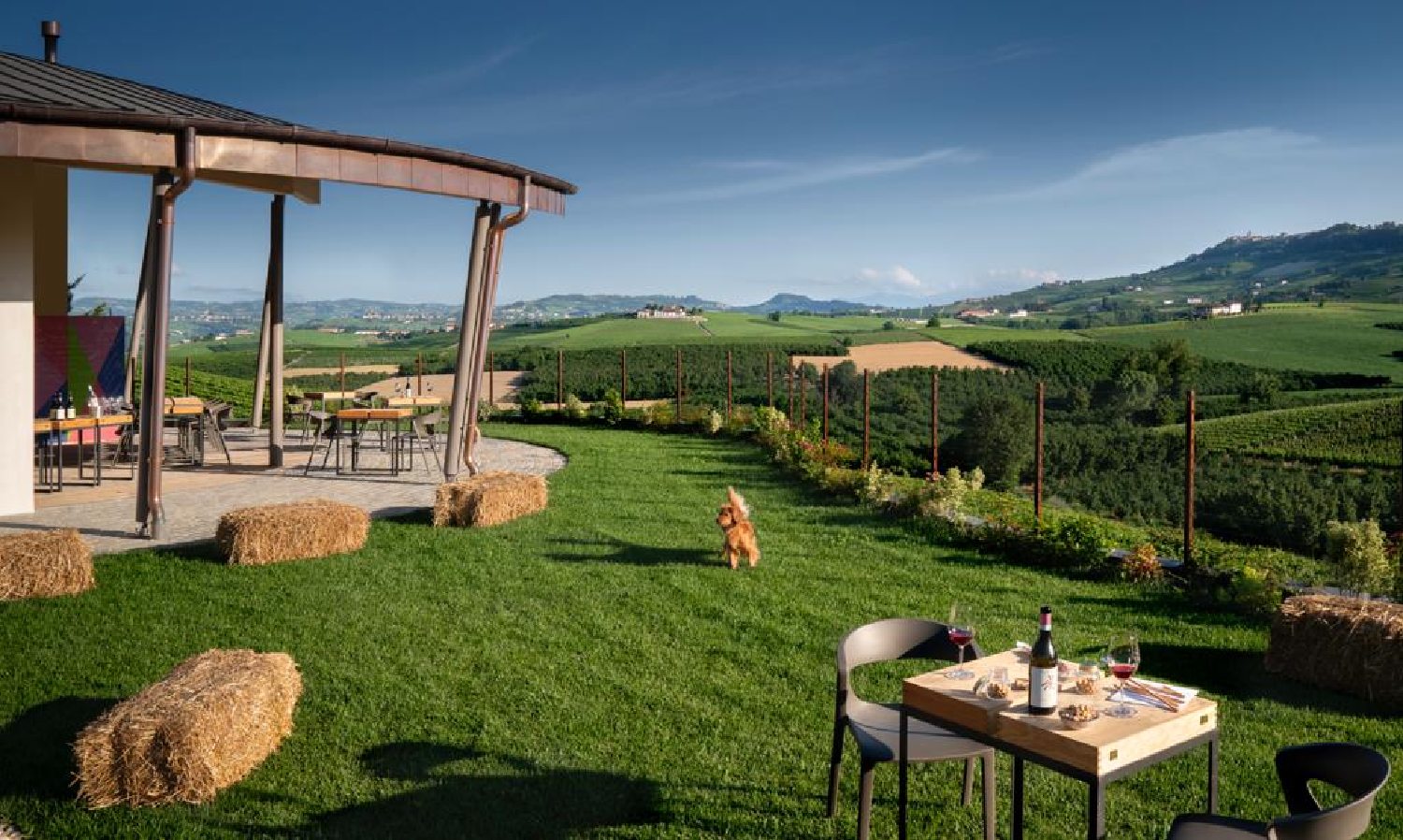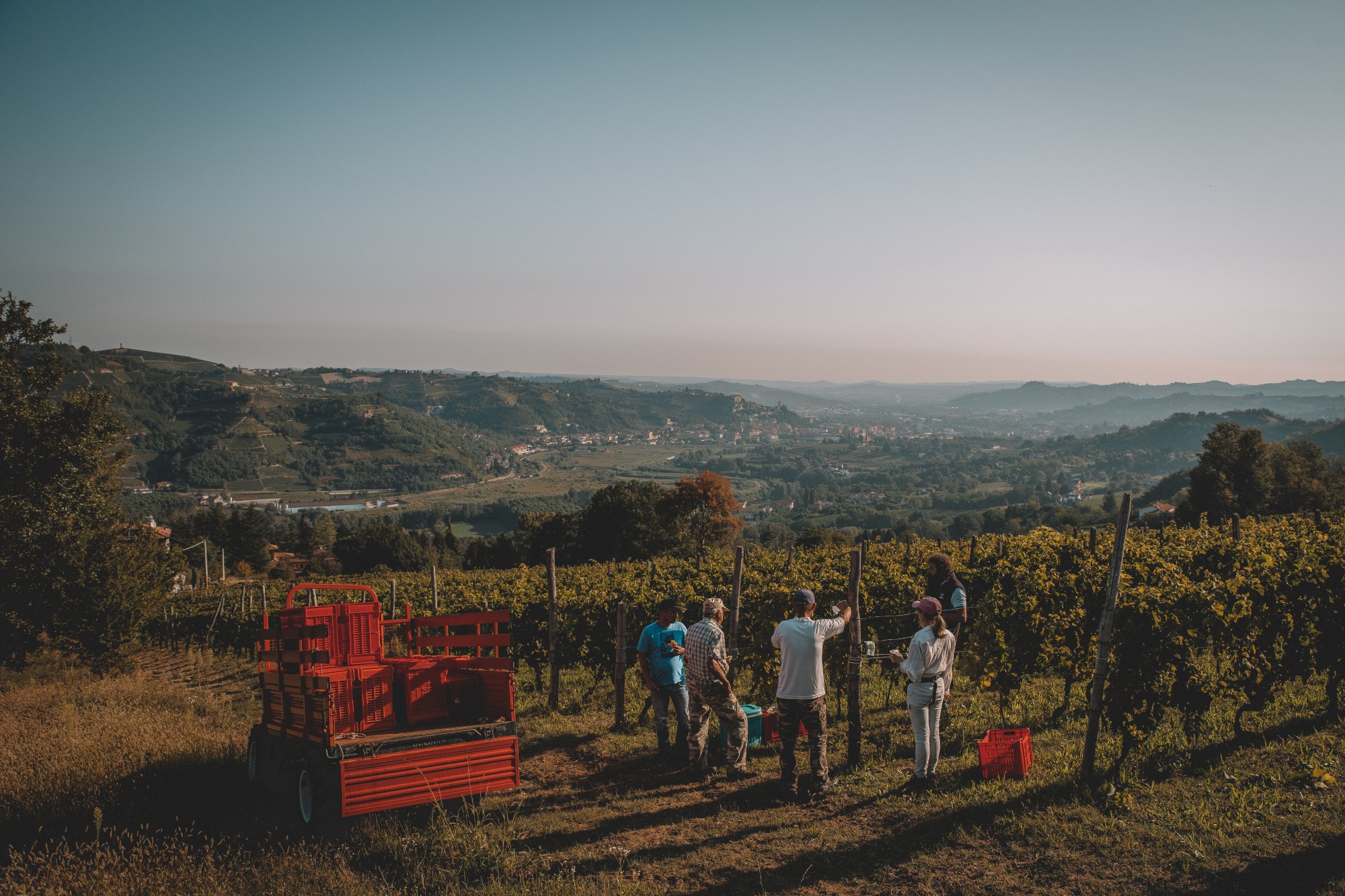Wandering in Langa
The most famous wineries in the Langhe Find out which ones to visit in 2025


The nobility of wine is precisely this: that it is never a detached, abstract object that can be judged by drinking a glass, or two or three, of a bottle that comes from a place where we have never been.
Mario Soldati
The Langhe is a land of golden hills and vineyards that tell centuries of wine history. A winery tour is the ideal way to fully understand this area: it’s not just about tasting a glass of Barolo or Barbaresco, but immersing yourself in the traditions, secrets and stories of those who work the vines with passion. In this guide you will discover the most celebrated wineries to visit in the Langhe, perfect for an unforgettable wine tourism itinerary, including excellent tastings and unique views.
If you’re looking for the best wineries in the Langhe to visit, you’ve come to the right place. From large, historic wineries to family-owned properties, each stop will offer you a personalized experience: tastings of fine wines, visits to the most renowned crus and breathtaking views of the Langhe, Roero and Monferrato landscape.
Whether you are a wine connoisseur or an enthusiast looking for a first taste, you will find valuable insights to enrich your wine tour.
The Ceretto winery, one of the most famous in the Langhe, was founded in 1936 by Riccardo Ceretto. The famous grape “Acino,” an architectural masterpiece with a futuristic aftertaste, stands out over their estates and already offers a first taste of their philosophy.
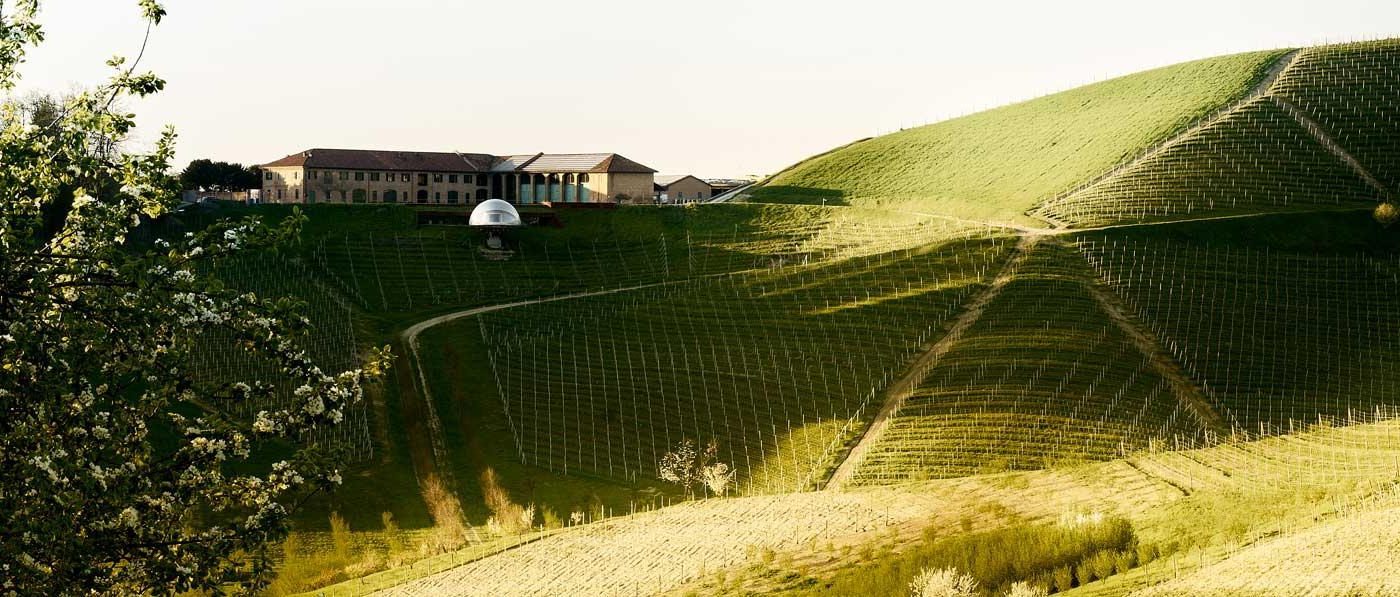
The winery has pioneered the use of sustainable and organic viticulture techniques and produces some of the best wines in the region. A visit to the winery includes a tasting of their fine wines, including Barolo, Barbaresco, Dolcetto and Moscato d’Asti. The winery also offers a culinary experience, with traditional Piedmontese dishes accompanied by a selection of wines.
For those who love contamination.
The winery tour includes:
Cantine Coppo is a world-renowned winery located in the town of Canelli, in the Asti area, and was one of the first in Italy to bottle wine under its own brand name.
Founded in 1892, the winery covers 27 hectares of vineyards and its main core is in Monferrato.
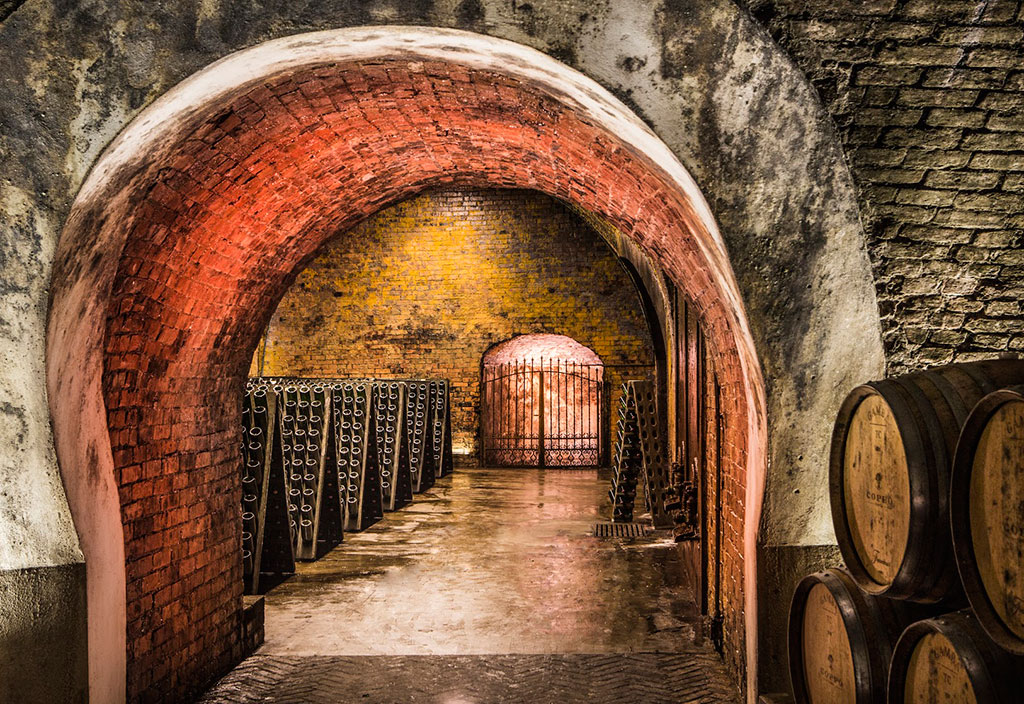
Its uniqueness, however, is hidden inside: in its basement there are, in fact, a series of ancient tunnels dug by hand into the tuff, called“infernot,” which are so striking that they became a UNESCO World Heritage Site in 2014 and have allowed the wine to be perfectly preserved.
For those who never cease to wonder
Here you will be able to:
The Marchesi di Barolo winery is one of the oldest and most prestigious in the region, founded in 1807 by the Marchesi Falletti family. Located in the heart of the area’s iconic wine, for six generations the winery has produced some of the Langhe’s most celebrated wines, including Barolo, Barbaresco, Barbera d’Alba and Dolcetto.
The visit includes a tasting of their wines and a tour to the historic underground cellars, where the wines are aged in oak barrels.
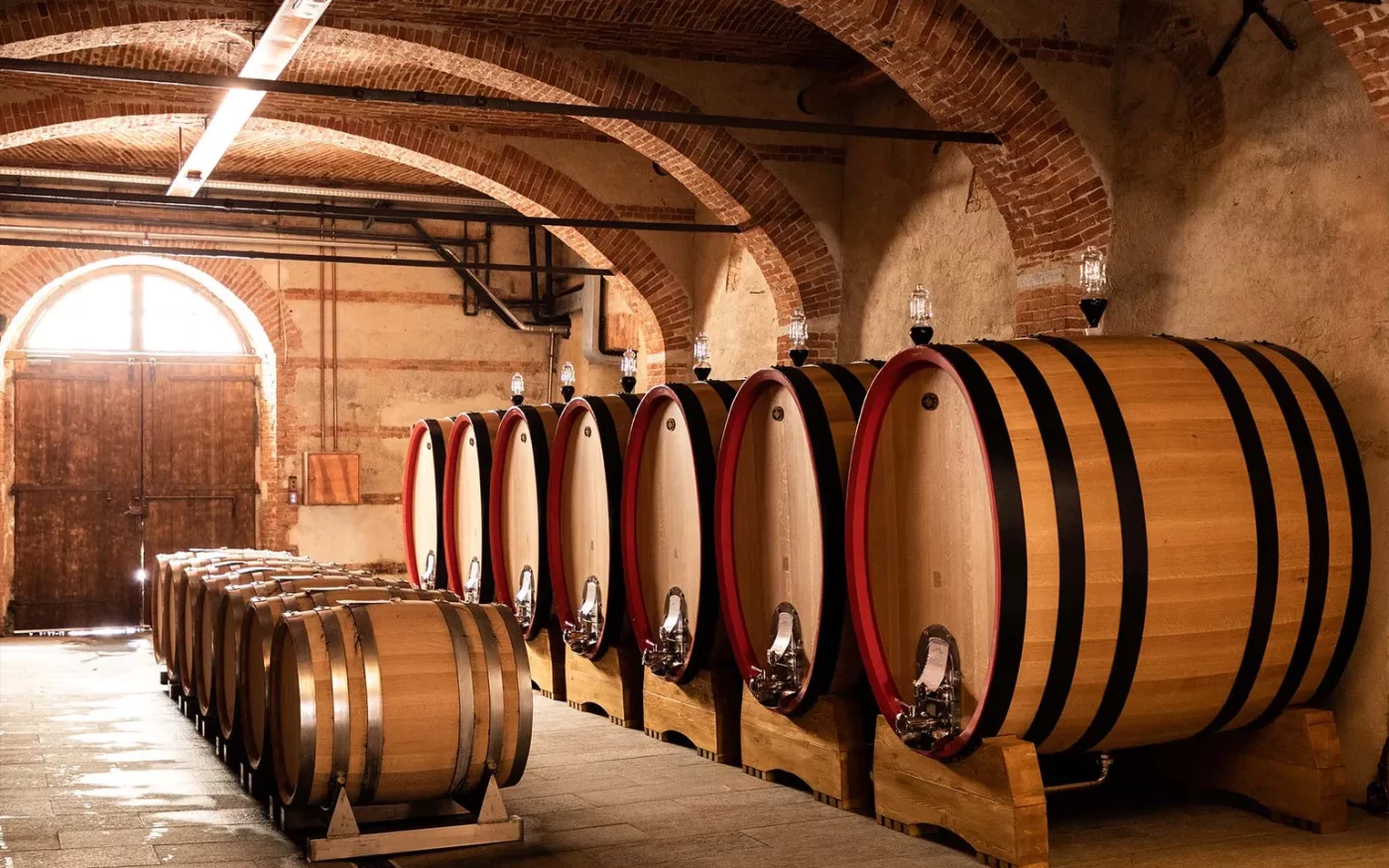
Here you can still admire the five barrels of Marchesa Giulia Falletti Colbert and the collection of rare bottles of Barolo Riserva from the late 19th century.
For those who love tradition.
Highlights of the visit:
Poderi Luigi Einaudi is a farm founded in 1897 by the President of the Italian Republic, Luigi Einaudi, in the heart of the Langhe, in Dogliani.
The farm began as a wine estate, but in later years it expanded to become a full-fledged farm, also growing grains, hazelnuts and other crops counting 13 farms of about 70 hectares.
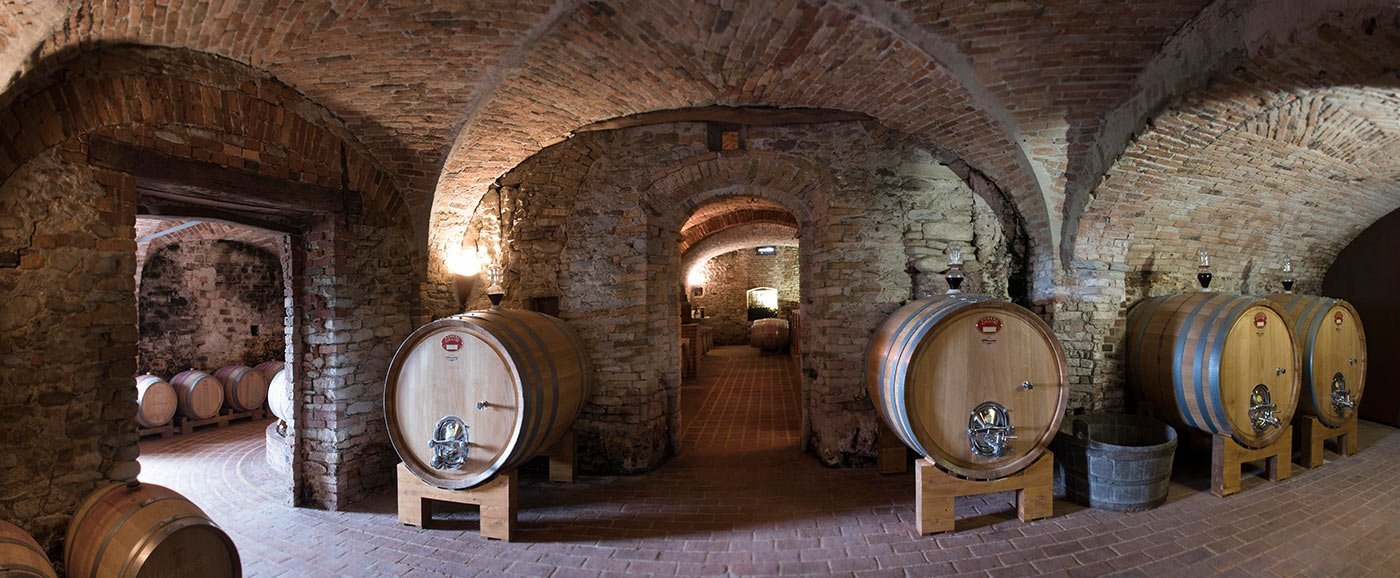
In 1998, Poderi Luigi Einaudi obtained “Organic Farm” certification for the production of wine, olives and hazelnuts.
Today, Poderi Luigi Einaudi is run by the fourth generation of the Einaudi family and produces a wide range of wines, including the famous Barolo, but also Barbera, Langhe Nebbiolo and other white wines such as Roero Arneis.
For those who live history with an eye to the future.
During the visit you will be able to:
Curiously evocative in name, the winery was established in 2007 by Sandra Vezza, “the repentant teetotaler” herself.
The winery’s architecture is characterized externally by two large stacked blocks reproducing two wine crates and surrounded by the rows of vines of its production.
Not only externally but also internally it is capable of amazement: large multicolored murals, Gufram design pieces like an unconventional and dreamlike pop dream combined with the quality of wines from original labels for whites and reds such as Barbera, Nebbiolo, Nascetta and Dolcetto.
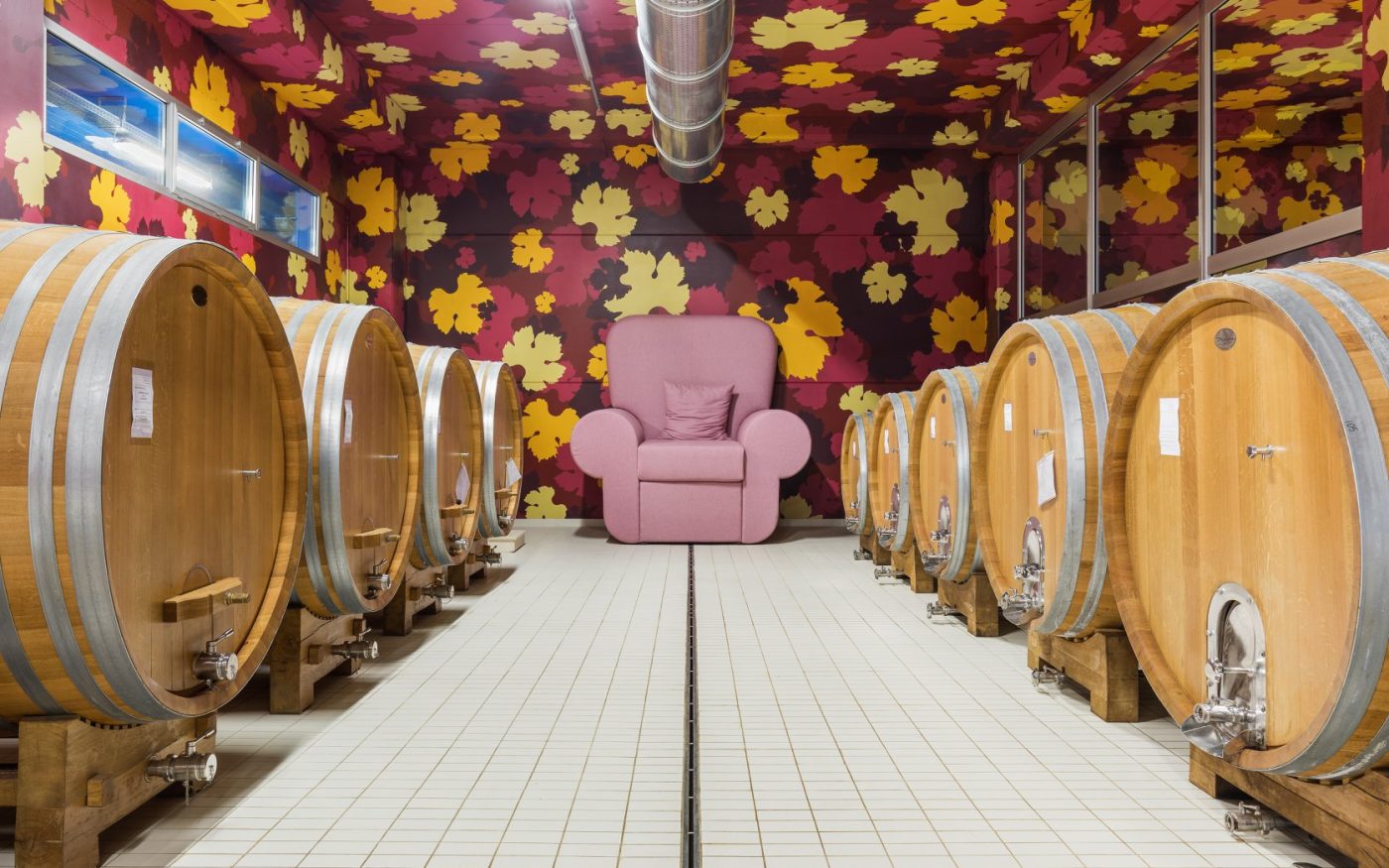
The winery is committed to environmental sustainability and uses organic and biodynamic farming techniques to cultivate its vineyards. It is also dedicated to the preservation and recovery of native grape varieties in the area.
For those who love contemporary art.
Highlights:
However, there are not only well-known companies such as those listed: it is beyond enriching to visit small local producers who will give you a welcome that is perhaps less “prestigious,” but certainly more familiar and genuine. Below are some suggestions!
With 320 hectares under vine and 10 farmsteads owned scattered across the Langhe and Roero countryside, the Bersano winery has been cultivating the vineyards of Piedmont since 1907. Since then, the wines produced have been a symbol of elegance and loyalty to tradition.
If you want to drink well, buy yourself a vineyard.
Arturo Bersano
Bersano is first and foremost a desire to protect and maintain agricultural culture, telling the whole world about the wine identity of the Piedmont region.
In fact, the winery produces a wide range of wines typical of the area, made in the Langhe and Monferrato where each soil gives the grapes unique characteristics.
Barolo, Barbera d’Asti, Barbaresco, Nebbiolo, Roero Arneis and Gavi, and the sweet Brachetto and Moscato are some of the labels to be discovered during the farm tour and at guided tastings.
The Massimelli family, owners since 1985, is daily committed to spreading the ideals already pursued since the early 1900s by founder Arturo Bersano, aware of the need to preserve the essence of the land as a precious asset, honoring the values handed down by previous generations.
The Bersano brand now holds the largest vineyard estate in Piedmont: the best grapes are selected from the 230 hectares owned, guaranteeing the best quality and controlling the entire production process.
An identity that is not only identified in the wines, but also in the presence of 10 farmsteads scattered across the countryside, a symbol of a rural world capable of change while maintaining a firm relationship with the past.
This winery continues to write the history of Piedmontese winemaking, shared with the visiting guest through stories, tastings and museum experiences of international significance.
Bersano is Piedmontese pride and represents the homeland in the world, with its presence in more than 40 countries.
You can read more about Bersano here.
La Cremosina is the first vineyard purchased by the Bersano family in 1912
53 hectares under vine in the commune of Agliano an area with a great vocation for the production of Barbera d’Asti and Nizza DOCG
The company tour also includes a visit to the wine ageing and maturation rooms
Dai 16 ettari di vigneti si ricavano vini tipici delle Langhe il cui Barbaresco DOCG Monvigliero è il vino di punta dell’Azienda. Possibilità di visita in Cantina, degustazione ed acquisto diretto
Morra, Monvigliero, Mosca.
The three letters “M” enclosed in the company logo tell and place the winery that has been based in Cascina Mosca since the early 1900s.
The Diego Morra Winery is located along the panoramic road that connects Alba and Verduno, a small town known as the sentinel of the Langhe, for its position as a historical garrison of the surrounding area.
On these hills, dedicated to the cultivation of the Nebbiolo grape, the company produces, among the other characteristic wines of the area, two types of Barolo DOCG.
The maximum expression of this wine is reached in the Monvigliero version, named after one of the best crus in the sub-areas of Barolo and especially Verduno.
The area is also the area of choice for Pelaverga, a native Piedmontese black grape variety, at the origin of one of the smallest DOCs in Italy.
You can read more about Diego Morra here.
The 3 intertwined ‘M’s’ represent and tell the identity, the company’s history and the territory within which the company is located
L’accoglienza, la visita e la degustazione sono condotte direttamente dai titolari
La nuova cantina con terrazza panoramica è pronta ad accogliere i visitatori
A small winery in the hills of Calosso run by Giuseppe and Tiziana offers a winery tour and the tasting of typical Monferrato wines
The territory of Calosso, a small town of about 1,200 inhabitants straddling the Langhe and Monferrato regions, presents itself with a panorama thick with vineyards that reach their maximum splendor during the months of October and November thanks to one of the most enchanting foliages in Piedmont.
In a panoramic position, cantilevering over the steep south-facing vineyards, is the Fea Vini winery, a small, family-run business where Giuseppe and Tiziana, the owners, receive guests directly.
The welcome, the passion for this land and the fruits it offers remain etched in the memory of those who visit thanks to their authentic homely hospitality.
From the very first visit, one understands the desire to pass on, especially to the youngest, the experience gained through years of work, without neglecting the hardest aspects of rural life, in a land that in 50 years has gone from the misery of the Malora to an economic, cultural and touristic well-being.
You can read more about Fea Vini here.
A place of peace and tranquility among the UNESCO hills
This is the spirit with which Giuseppe faces the daily challenges of his profession
Calosso has always been a land of great wines, a land of which Moscato d’Asti is the main resource
L’Azienda Marco Capra, in località Seirole, sulle colline di Santo Stefano Belbo propone visite in cantina e degustazione guidata. È possibile acquistare direttamente i vini in Cantina e farli spedire alla destinazione scelta.
The Marco Capra farm is located on the hills of Seirole, in the municipality of Santo Stefano Belbo about 6 km from Canelli.
The road that reaches the winery is a succession of scenic bends that embrace the Langhe and Monferrato, in an alternation of vineyards, woodlands and small villages recognizable by ancient towers, castles and churches.
An evocative landscape that reaches its peak in October and November.
The foliage dyes the vineyards with the warmest colors and the morning mists lay like a thin veil on the soft shapes of these hills.
The territory is the heart of Pavese’s places: Santo Stefano Belbo is the town that gave birth and burial to the writer Cesare Pavese and is the setting in which his latest novel, “La Luna e i falò“, published in 1950, comes to life.
You can read more about Marco Capra here.
The territory is that of the Municipality of Santo Stefano Belbo, recognized as a UNESCO heritage site
The work in the vineyard is in full swing even in winter, between routine work and new projects
The harvest begins at the end of August with Chardonnay and Pinot Nero for the sparkling wine bases and in the first days of September with the grape varieties: Moscato, Chardonnay and Nascetta
The wineries of the Langhe are true temples of wine, where you can discover the secrets of producing some of Italy’s finest wines. In addition to tastings, these wineries offer the chance to immerse yourself in the history and culture of the area, with guided tours that take you on a discovery of winemaking methods, the barriques in which the wines are aged, and the vineyards where it all began.
A visit to wineries in the Langhe is not only an opportunity to taste wines of the highest quality, but also to connect with the wine culture of Piedmont. Each winery has a unique story to tell and offers customized tours that will allow you to explore the secrets of local winemaking. Some of the most famous wineries also offer gastronomic experiences, where you can pair wines with traditional Piedmontese dishes.
Visiting the wineries of the Langhe is an experience that goes beyond just wine tasting. It is a journey through tradition, culture and unique landscapes that will leave you with unforgettable memories. If you want to discover where Italy’s most celebrated wines are born, this is the place to start. Plan your visit now and get ready to experience an enological adventure among the hills of the Langhe.
